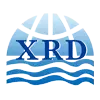Calcium chloride (CaCl₂) is a versatile inorganic salt widely used in industry, food, construction, medicine, and other fields. This article will comprehensively analyze the use of calcium chloride, from chemical properties to application scenarios, safe operation to industry solutions, and provide practical guidelines.
Basic Overview of Calcium Chloride
Chemical Properties
Calcium chloride (CaCl₂) has the following characteristics:
- High hygroscopicity: It easily absorbs water and can be used as a desiccant.
- Easily soluble in water: The solubility increases with increasing temperature (about 59g/100mL at 0℃, about 159g/100mL at 100℃).
- Low melting point: about 772℃ (anhydrous calcium chloride).
- Exothermic dissolution: Releases heat when dissolved in water, suitable for melting ice in winter.
Common forms
| Form | Features | Main uses |
| Powder | High purity, easy to dissolve | Laboratory, food additives |
| Particles | Good fluidity, anti-caking | Road deicing, desiccant |
| Solution | Ready-to-use, adjustable concentration | Concrete maintenance, medicine |
Industrial grade vs. food grade (comparison table)
| Features | Industrial grade | Food grade(E509) |
| Purity | ≥94% | ≥99% |
| Impurities | May contain heavy metals | Meet FDA/GB standards |
| Use | Deicing, desiccant | Cheese, canned food, sports drinks |
Key application scenarios
Road deicing
- Dosage ratio: Spread 20-50g per square meter (adjusted according to the thickness of the ice layer).
- Environmental impact: Less corrosive than table salt (NaCl), but may still affect soil pH.
-
Comparison with salt (NaCl):
- Calcium chloride melts ice faster (still effective at -20℃, table salt only -9℃).
- Less corrosive to metals.
Food industry
- Cheese coagulant: accelerates protein coagulation and increases yield.
- Canned food preservation: maintain the crispness of fruits and vegetables (such as bottled cucumbers).
- Electrolyte supplement: added to sports drinks to balance body fluids.
Construction industry
- Concrete accelerated curing: added during winter construction to prevent freezing.
- Antifreeze: lower the freezing point of water and protect newly poured concrete.
Desiccant
- Packaging drying: used for moisture-proofing of electronic products and medicines.
- Gas drying: dehumidification of industrial gases (such as hydrogen).
Medical field
- Blood calcium regulation: treatment of hypocalcemia (intravenous injection).
- Injection formula: balance electrolytes (such as Ringer's solution).
Usage Guide
Safety operation specifications
- Protective equipment: wear gloves and goggles (to prevent skin irritation).
- Storage conditions: store in a sealed dry place (to avoid moisture absorption and agglomeration).
Solution preparation ratio
| Purpose | Recommended concentration |
| Road deicing | 30-35% |
| Food additives | 1-5% |
| Concrete maintenance | 5-10% |
Chemical compatibility warning
Avoid mixing: strong oxidants (such as nitrates), and sulfuric acid (precipitation).
Frequently Asked Questions (FAQs)
Does calcium chloride corrode concrete?
A: Long-term use at high concentrations may cause slight corrosion, but short-term deicing has little effect.
Should calcium chloride be used before or after shoveling snow?
A: It works better after shoveling snow, and direct contact with the ice surface accelerates melting.
How do you judge whether calcium chloride has deteriorated due to moisture?
A: If the agglomeration is severe or turbid after dissolution, it may have absorbed moisture and become ineffective.
Industry solutions
Steps to adjust the calcium hardness of swimming pool water
- Test calcium hardness (ideal range: 200-400ppm).
- Calculate the dosage by adding 1.5g calcium chloride per ton of water to increase 1 ppm.
- After dissolving, sprinkle evenly and circulate the filter for 2 hours.
Calcium chloride dust control dosage
Spray 5% calcium chloride solution in dust-prone areas (such as mining areas) to suppress dust.

